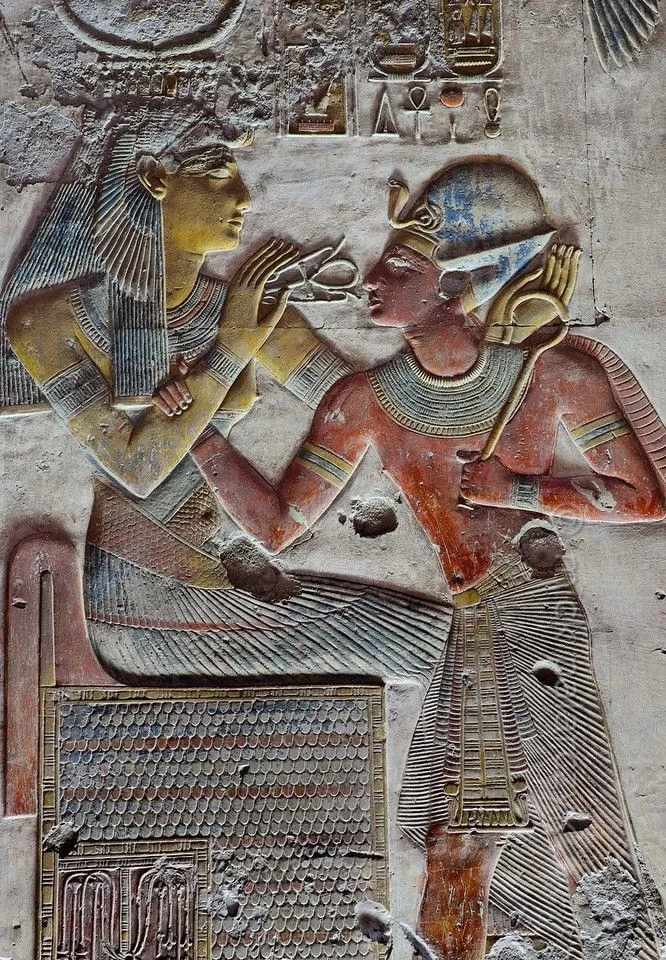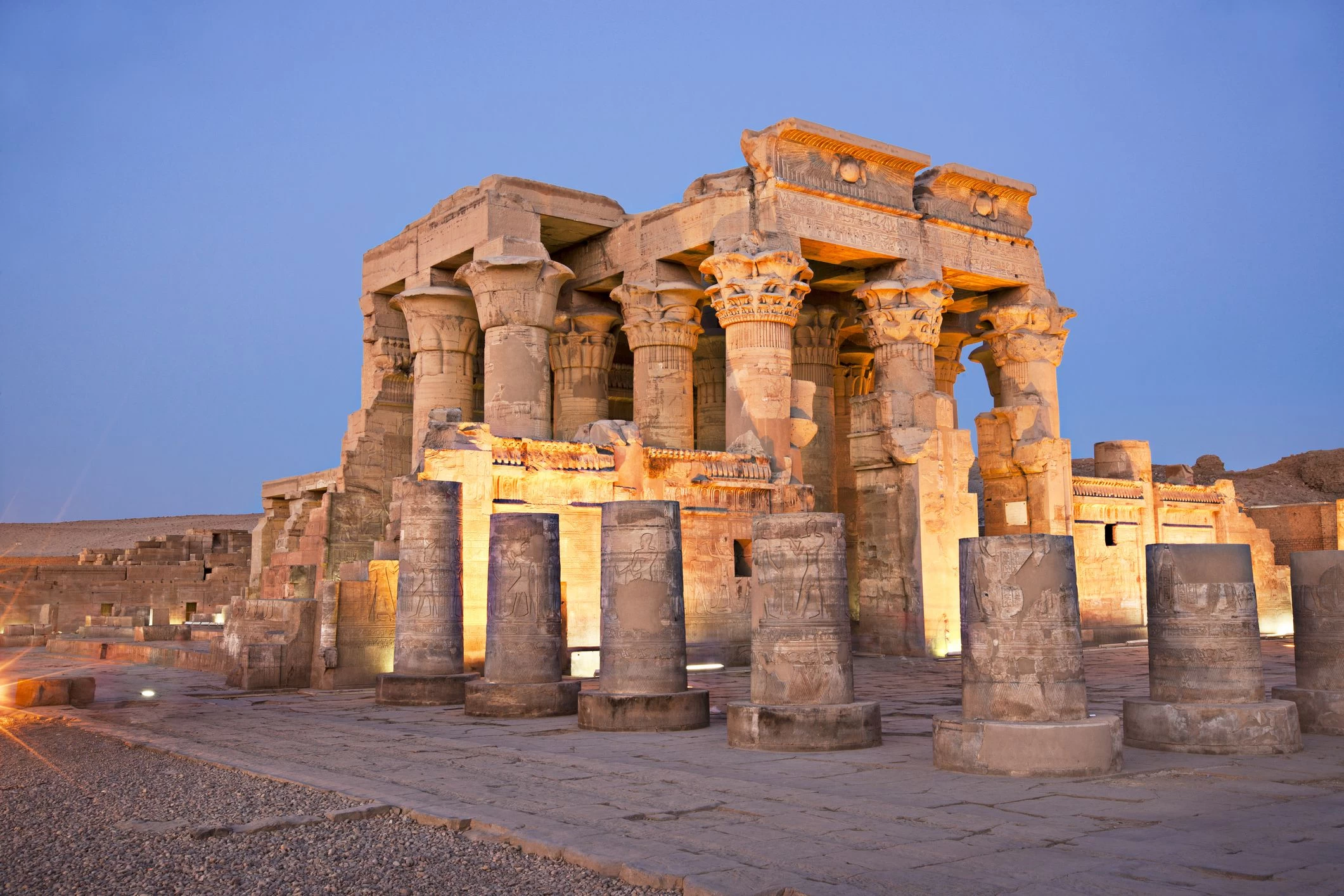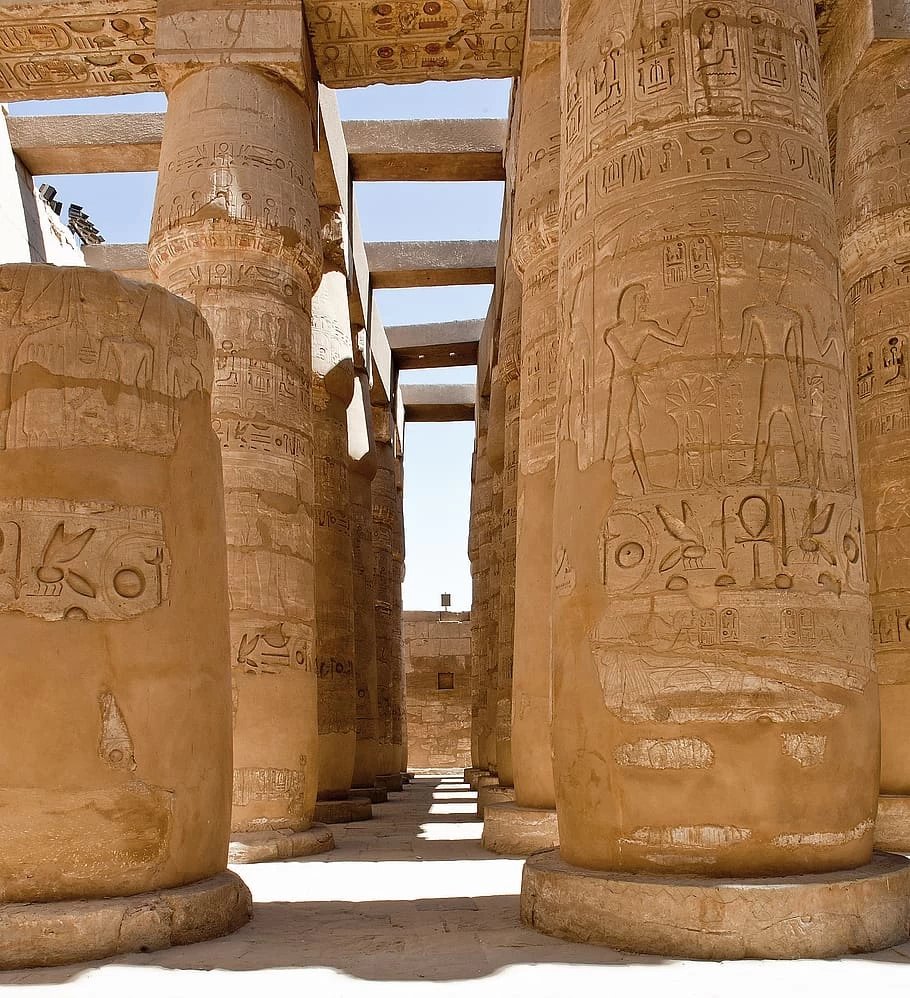Luxor attractions

Luxor is one of the most famous cities of Ancient Egypt, known as Thebes. During the New Kingdom (circa 1550–1070 BC), it was the capital of Egypt. It became the center of religious and political life, especially with the worship of the Egypt supreme god at the time The god Amun-Ra, whose temple complexes like Karnak still stand today.
Thebes was often referred to as the "City of a Hundred Gates" because of its grandeur and the sheer number of monumental structures and its huge massive temples.
The city is split into two parts by the Nile River: the East Bank, where most of the temples and monuments are found, and the West Bank, which contains the tombs and funerary monuments of ancient Egypt’s pharaohs and nobility.
Start your journey and wonder the following monuments;
The Karnak Temples Complex;
is one of the largest ancient religious sites in the world, covering 247 acres. The Construction at the complex began during the reign of Senusret I in the Middle Kingdom (around 2000–1700 BC) and continued into the Ptolemaic Kingdom (305–30 BC).
The complex is a vast open site and includes The Karnak Open Air Museum. Which is considered the second most visited historical site in Egypt after the Famous Giza pyramid complex. The Main temple of Karnak often is being the Precinct of Amun-Re the main deity of Thebes (Luxor). The Karnak Temples Complex were developed over a period of 1500 years, added to by generation after generation of pharaohs, resulting in a collection of temples, sanctuaries, pylons, and other decorations that is unparalleled throughout.
The Luxor Temple;
Is one of Egypt’s most iconic ancient structures. The temple was dedicated to the Theban Triad of gods: Amun, Mut, and their son Khonsu. The construction of the temple began during the reign of King Amenhotep III around 1390–1352 BC, it was later expanded by King Ramses II in the 13th century BC. The Luxor Temple's ability to adapt and transform through different periods of history as Greek, Roman, Christian and Islamic, is a testament to its enduring significance and the cultural blending that occurred in ancient Egypt. Luxor Temple was a major religious center and played a key role in the annual Opet Festival, where the statues of the gods were paraded from Karnak to Luxor to celebrate the fertility of the land and the re-coronation of the King.
cross to the West Bank of Luxor that is situated directly opposite the city of Luxor, it was considered the land of the dead, and it was here that pharaohs, queens, nobles, and high officials were buried in elaborate tombs. The ancient Egyptians believed that this was the domain of the afterlife, where they would transition to the next world. To explore the ancient necropolis of Thebes. Here, you'll visit the Valley of the Kings, the resting place of pharaohs, and admire the grandeur of the Hatshepsut Temple, dedicated to Egypt’s longest-reigning female pharaoh. finally explore famous the Colossi of Memnon.
Luxor West Bank;
Luxor west bank is situated directly opposite the city of Thebes, was considered the land of the dead, and it was here that ancient Egypt Kings, Queens, Nobles, and High Officials were buried in elaborate tombs. The ancient Egyptians believed that this was the domain of the afterlife, where they would transition to the next world.
The West Bank of Luxor is where the ancient Egyptians believed their kings and important figures transitioned to the afterlife. The tombs, temples, and monuments on this side of the Nile River were built with great care and purpose, reflecting the Egyptians’ complex religious beliefs and their desire to ensure the eternal life of their rulers and loved ones.
The Valley of the Kings;
The Valley of the Kings, which dates back to around the 16th century BC, became the burial site for many of Egypt's pharaohs, particularly during the New Kingdom. These rugged, hidden valleys of the West Bank provided a safer and more remote burial location. The valley contains 63 tombs, including that of the famous Tutankhamun and the mighty Ramses II.
The tombs were carved deep into the rock and decorated and paintings, often showing the journey of the deceased to the afterlife. These tombs represented the ancient Egyptian belief in immortality and the importance of preparing for the afterlife with grave goods, spells, and rituals.
The Mortuary Temple of Hatshepsut;
The Mortuary temples were constructed for pharaohs and prominent figures, where they could be honored and worshipped after their death. These temples were also sites for rituals that ensured the continued survival of the pharaoh's spirit in the afterlife. Hatshepsut’s Temple is One of the most famous and impressive mortuary temples on the West Bank, the Temple of Hatshepsut (c. 1479–1458 BCE), was built by the female pharaoh Hatshepsut whose is considered Egypt’s longest-reigning female pharaoh. The grand design features three levels of terraces that rise up against a backdrop of steep cliffs.
The Colossi of Memnon;
The famous land mark of the Colossi of Memnon are two massive statues of The King Amenhotep III (c. 1386–1353 BC) that once flanked the entrance to his mortuary temple. These statues, though damaged over the centuries, are iconic symbols of the West Bank.
The Noble Tombs;
Mostly dates to the New Kingdom period, which spanned from around 1550 BCE to 1070 BCE. The Noble Tombs are located in the Theban Necropolis on the west bank of the Nile River. The tombs of the nobility are located to the north and south of the Kings Valley, there are over 400 tombs in this area, and they are divided into groups.
The walls of the noble tombs are covered in stunning frescoes and reliefs that provide insight into everyday life in ancient Egypt. Unlike the Kings Vally ' tombs, which focused heavily on the afterlife, the noble tombs often depicted more personal and detailed scenes, such as: Agricultural work, Feasts and celebrations, Hunting and fishing, Music and dancing. These scenes were intended to ensure the deceased's continuation of such activities in the afterlife, often with an emphasis on their social status and achievements.
Nobles in ancient Egypt were typically high-ranking officials, priests, scribes, and military leaders. They played an essential role in maintaining the social order and working on behalf of the pharaohs. These officials were often the ones who oversaw the building of large-scale projects, managed the wealth of the kingdom, and ensured the success of religious ceremonies.
The Temple of Medinat Habu;
Is one of the most impressive and well-preserved temples in Luxor and it is one of the major attractions of the Theban Necropolis. It was built during the 19th Dynasty of the New Kingdom, by King Ramesses III (1186–1155 BC) as a mortuary temple for the king.
One of the most remarkable aspects of Medinat Habu is its extensive depiction of the King Ramesses III’s military campaigns, particularly his battles against the Sea Peoples. The Battle is illustrated in vivid detail on the walls of the temple, showing the King Ramesses III's heroic defense of Egypt. These reliefs provide a rare and valuable visual account of these conflicts.
The Temple of Medinat Habu is renowned not only for its impressive architecture but also for the vibrant and intricate colors that still adorn its walls, despite the ravages of time. The original pigments have largely faded due to centuries of exposure to the elements, but many of the reliefs and paintings still retain a vivid impression of their once-glorious hues.
The Valley of the Queens;
Was used during the 18th, 19th, and 20th dynasties (around 1550–1070 BCE) in the New Kingdom period of ancient Egypt. It served as the burial place for queens and royal women, a practice that began during the reign of King Thutmose I (c. 1504–1492 BCE), and continued through the reigns of subsequent Kings.
The tombs in the Valley of the Queens are designed in a similarity to those in the Valley of the Kings, with rock-cut chambers, corridors, and burial chambers. The tombs are often richly decorated with scenes from the afterlife, religious texts, and depictions of the deceased engaging in religious rites. However, the tombs in the Valley of the Queens are generally smaller and simpler in scale than those of the male Kings in the Valley of the Kings.
the Valley of the Queens offers a fascinating insight into the lives and beliefs of the royal women of ancient Egypt. Its well-preserved tombs, particularly the tomb of Nefertari.
Luxor Hot air balloon by the sunrise;
Float gently above the ancient city of Luxor as the first light of dawn paints the sky in breathtaking hues. Here's a glimpse into the magic of a sunrise balloon ride in Luxor. As you ascend into the sky, you'll be treated to unparalleled panoramic views of Luxor’s historical treasures. gaze upon iconic sites such as the Valley of the Kings, the Colossi of Memnon, and the magnificent temples as the temple of King Ramesses II, Habu Temple. See the sprawling landscape of the Nile River, lush green fields, and the contrast of the golden desert sands.
Thebes was often referred to as the "City of a Hundred Gates" because of its grandeur and the sheer number of monumental structures and its huge, massive temples.








